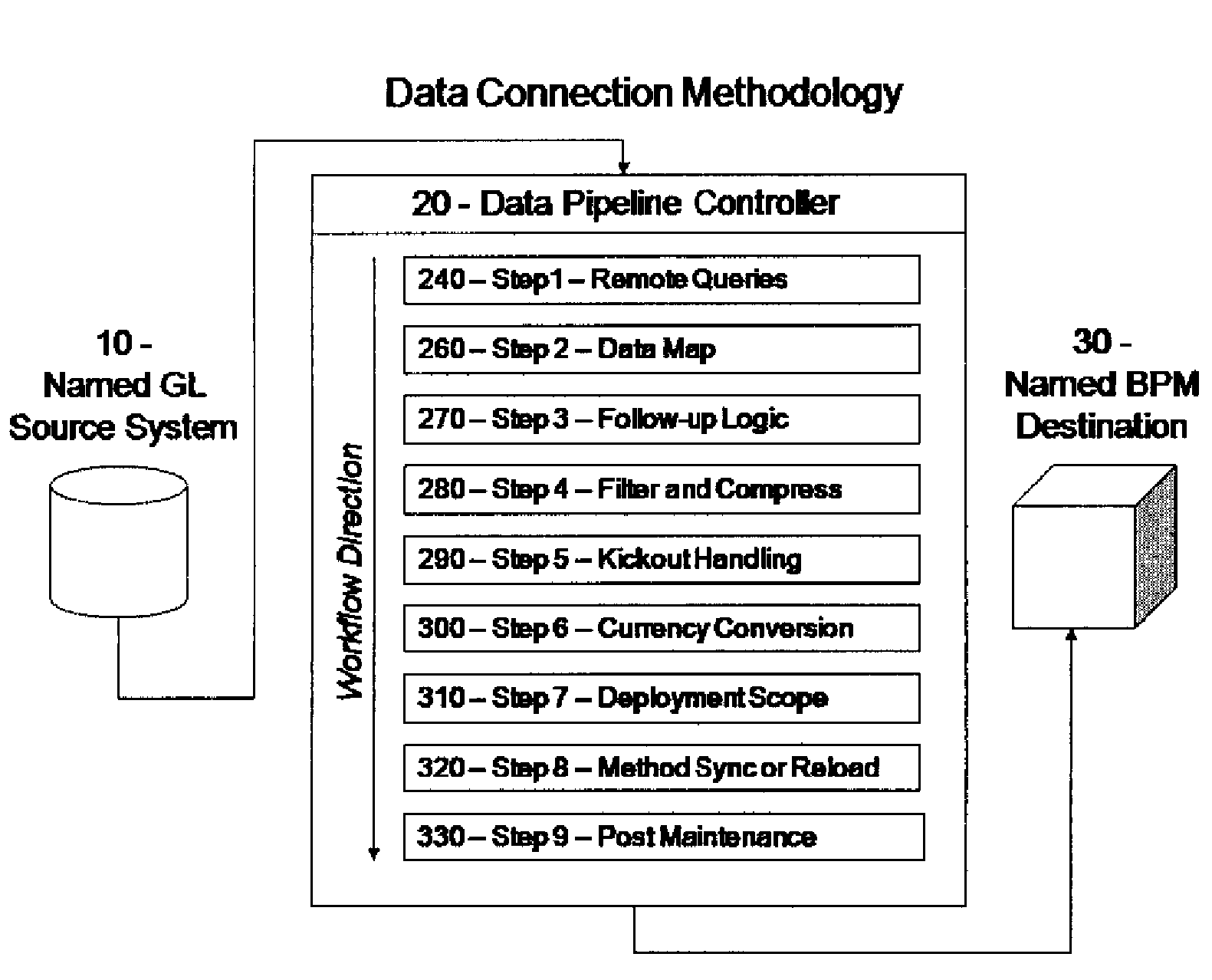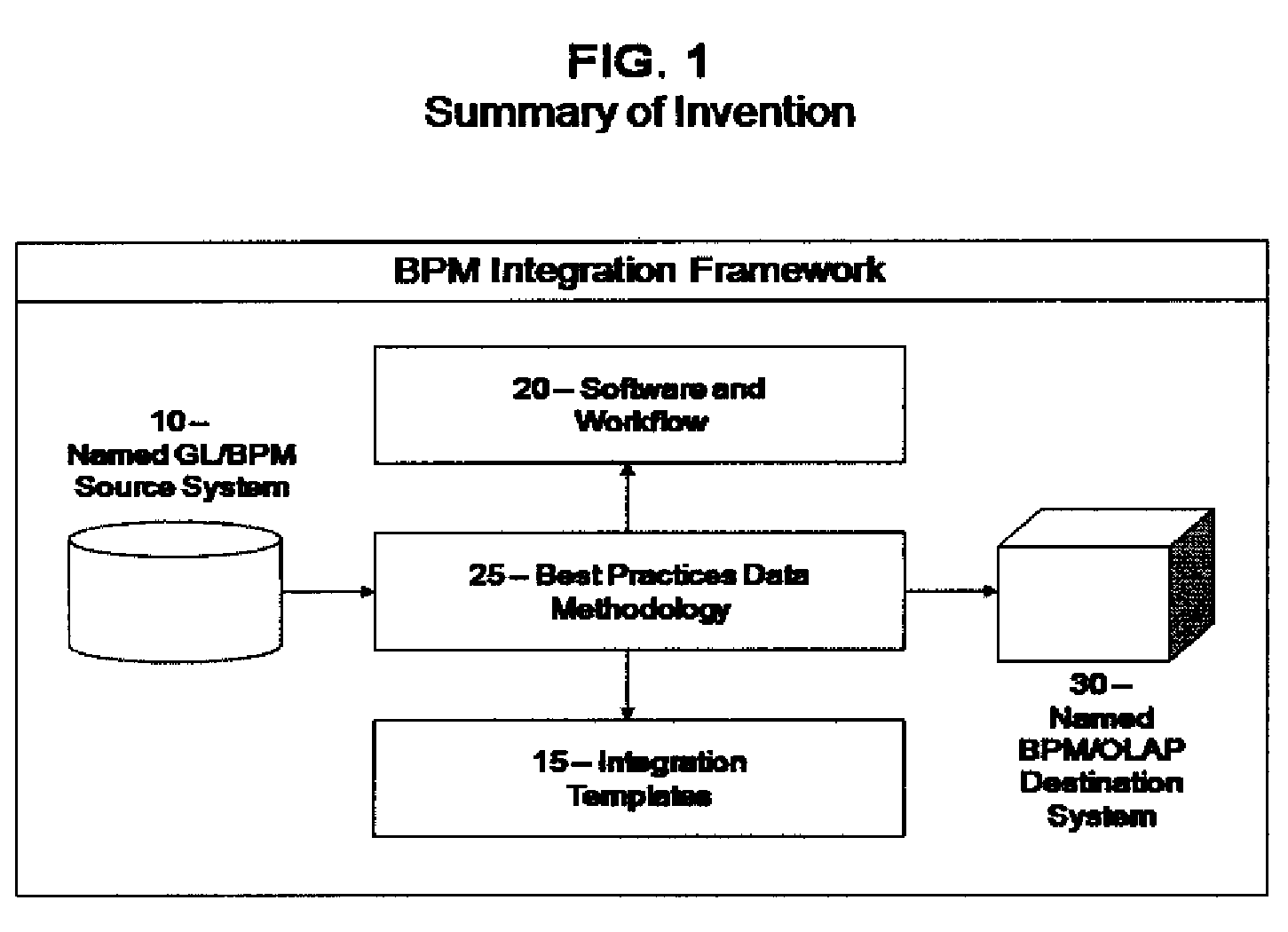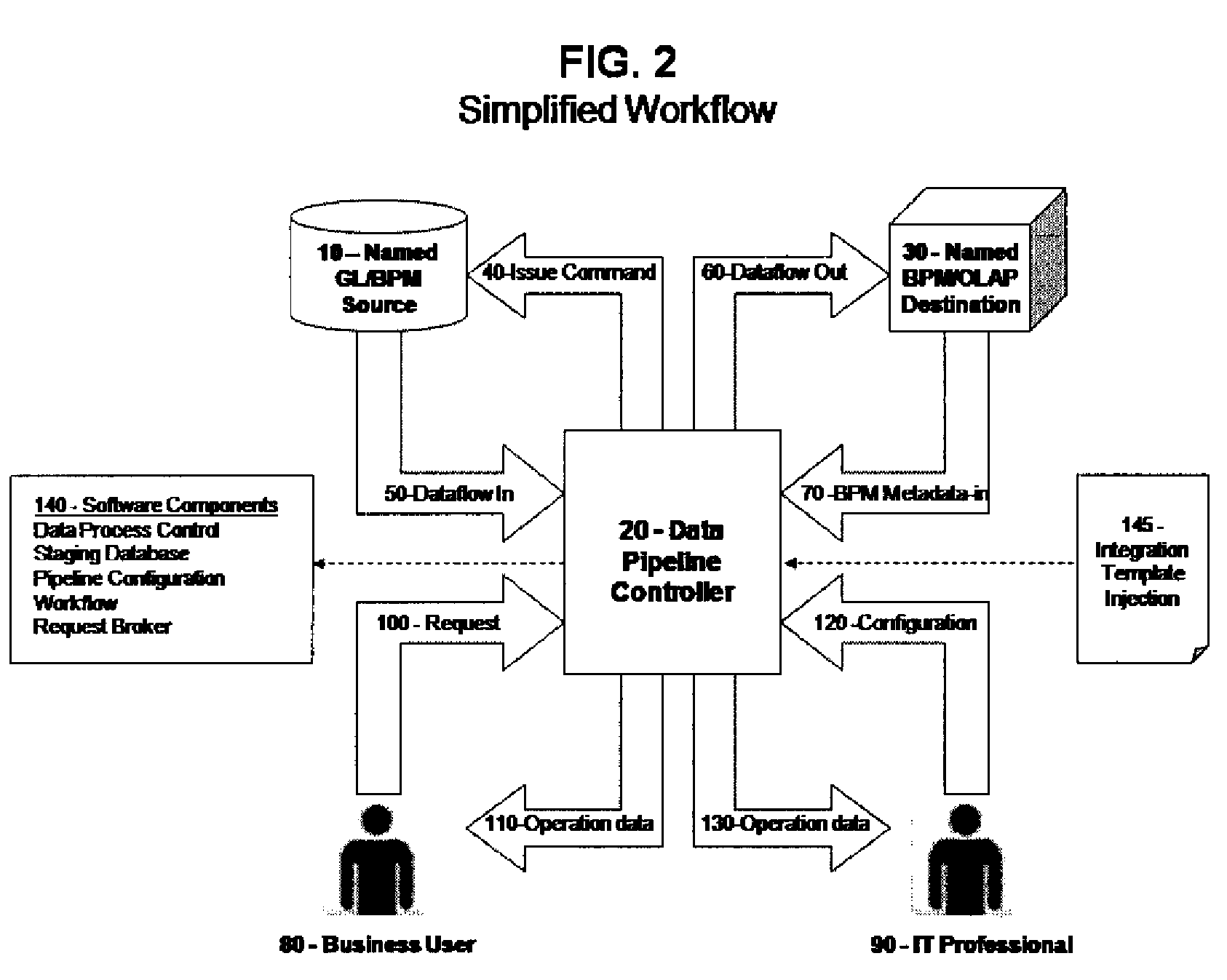System and method of data movement between a data source and a destination
a data source and destination technology, applied in the field of remote database management systems and online analytical process systems, can solve the problems of data fragmentation that can quickly become a problem, and the prior art is not equipped to handle this in an optimized fashion, so as to achieve a high degree of usability and maintain flexibility
- Summary
- Abstract
- Description
- Claims
- Application Information
AI Technical Summary
Benefits of technology
Problems solved by technology
Method used
Image
Examples
Embodiment Construction
[0042]Referring now to FIG. 1, this diagram depicts three primary parts of the invention. The data connection Methodology (25) is a series of sequentially arranged commands, protocols, security and performance tests, and checkpoints arranged in a structured standardized framework along a successively staged, sequence-dependent data flow process. ETL techniques are employed but are contoured to the specifics of high performance point-to-point data transfer between GL and BPM. This methodology promotes single-point integration methodology, meaning it links directly to the named GL system and does not use a multi-phase process, such as a flat file. (While this methodology promotes a single-point process, it can pull from flat file sources or any other ODBC compliant source). This is a Sarbanes-Oxley compliant methodology.
[0043]The BPM Integration framework requires two logical prerequisite components to be in place before functionality can be achieved. Prerequisite 1 is an ODBC-complia...
PUM
 Login to View More
Login to View More Abstract
Description
Claims
Application Information
 Login to View More
Login to View More - R&D
- Intellectual Property
- Life Sciences
- Materials
- Tech Scout
- Unparalleled Data Quality
- Higher Quality Content
- 60% Fewer Hallucinations
Browse by: Latest US Patents, China's latest patents, Technical Efficacy Thesaurus, Application Domain, Technology Topic, Popular Technical Reports.
© 2025 PatSnap. All rights reserved.Legal|Privacy policy|Modern Slavery Act Transparency Statement|Sitemap|About US| Contact US: help@patsnap.com



